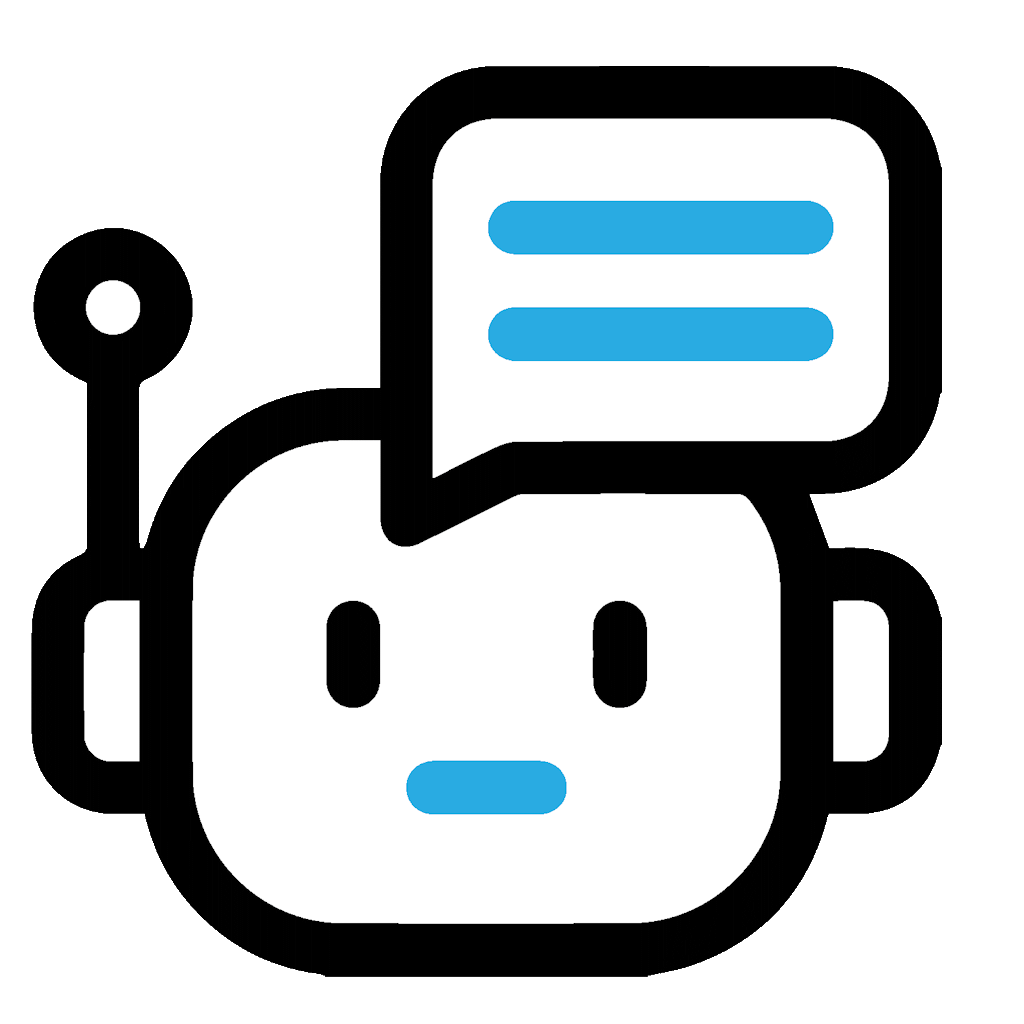Getting the most out of the current progress is the key to productivity, efficiency, and business success. AiSDR (Artificial Intelligence Sales Development Representative) is one such tool that assists you with audience targeting, content personalization, task automation, sales qualification, delivering results, CRM integration, and analytical optimization. It is like a one-man army that cuts your business costs and doubles the productivity. The AiSDR competitors and alternatives also offer multiple options that cater to the individual needs of businesses, personalized to their own requirements.
It is difficult to get your hands on alternative tools that can satisfy your business needs. Sales management is easier said than done. You and your teams have multiple tasks ahead that seem small, but when you start, they take a lot of time, energy, and a major chunk of your budget. Therefore, it is important to choose the best tools for the workplace to get the most out of them.
Top 10 Best AiSDR Competitor Tools
Here comes a quick tour you can trust. Real uses come first, not hype. Use this list to build a smart shortlist. If you are looking for a reliable sales companion, you might be interested in checking out OpenAI AiSDR.

1. Apollo.io
Apollo.io brings a large B2B contact list and outreach tools into one place. Users can search, sort, and pick good-fit accounts with ease. Sequences link to that research, so work moves fast. Simple scoring and intent help you know who to email first. Clear reports show what subject lines and messages work best.
Many teams want one hub for daily work. Apollo.io gives that and cuts down on tool swaps. Deliverability help and warm-up tips protect your domain. Step by step, teams build a pipeline with less guesswork. For a steady starting point among AI SDR automation software, Apollo.io fits well.
Pros:
- Large B2B database with sequences.
- Built-in warmup and guidance.
- All-in-one workflow reduces switching.
- Transparent pricing and generous starter.
Cons:
- Data accuracy can be inconsistent.
- Credit limits cap high volume.
- Learning curve; occasional UI slowdowns.
- Deliverability setup still required.
2. Qualified
Qualified turns website visits into live sales talks. Chat and smart bots meet buyers at the right time. Meetings are booked in a few clicks. Routing rules send the right lead to the right rep. All outcomes push back to your CRM, so records stay clean.
AiSDR leans into scaled cold outreach. Qualified leans into real-time chats and ABM. Many teams need both. Pair Qualified with an email sequencer to cover proactive and reactive work. When account intent spikes, your team is ready. That mix earns its spot on any best AiSDR alternatives 2025 list.
Pros:
- Salesforce-first platform with deep integration.
- Real-time chat and bots convert.
- Strong routing and broad integrations.
- Effective for ABM and field.
Cons:
- Not a bulk cold sequencer.
- Needs meaningful website traffic volume.
- Advanced features on higher tiers.
- Best inside already Salesforce-centric stacks.

3. ZoomInfo Sales
ZoomInfo Sales starts with deep company and contact data. Intent topics, tech tags, and org maps add rich context. Those signals make lists smarter and replies more likely. Orchestration rules launch messages as soon as a new buying signal appears.
Stale lists slow teams down. ZoomInfo fixes that with strong enrichment. Add your copy, then slice audiences by intent and timing. High-fit leads enter your AI sales outreach tools at the right moment. Less waste leads to more meetings and cleaner results.
Pros:
- Very large enriched data graph.
- Signal orchestration triggers timely outreach.
- Sales automation module available, Engage.
- Mature compliance and security posture.
Cons:
- Quote-based, often higher pricing overall.
- Data accuracy varies; verify lists.
- Outreach depends on Engage or integrations.
- Setup and UX can be complex.
4. HubSpot Sales Hub
HubSpot Sales Hub puts email sequences, tasks, files, and meetings inside a full CRM. Playbooks and templates speed up ramp time for new reps. Reports connect actions to revenue, so leaders can compare teams, cadences, and outcomes without delay.
One big win is a simple flow across the funnel. Marketing, sales, and service share one place. Data stays synced. If you already use HubSpot Marketing Hub, Sales Hub extends that view. Growing teams can scale outreach, inbound, and post-sale care together. As an automated cold email platform, HubSpot is a durable choice.
Pros:
- Sequences, tasks, and meetings inside CRM.
- Strong reporting tied to revenue.
- Smooth handoffs with Marketing Hub.
- Clear catalog and feature documentation.
Cons:
- Daily send limits and caps.
- Advanced features need higher tiers.
- Deliverability tools are quite basic.
- Platform lock-in risk increases later.
5. Drift
Drift made conversational marketing common. Bots start chats, answer questions, and qualify visitors. Meetings can be booked on the spot. When a target account arrives, reps get alerts and can jump in fast. That speed helps a lot when timing is tight.
Cold email pushes out. Drift pulls in. Both work better together. Use sequences to create demand, and use Drift to catch demand. Real-time help pairs well with planned campaigns. Teams that run enterprise motions or product-led growth often see clear gains with this B2B lead generation AI approach.
Pros:
- AI chat playbooks qualify fast.
- Strong for ABM, real-time conversations.
- Integrates well with major CRMs.
- Proven impact in converting website visitors.
Cons:
- Not built for bulk email.
- Advanced features require higher tiers.
- Needs steady, qualified web traffic.
- Bot playbooks need ongoing tuning.
6. Outboundly.ai
Outboundly.ai helps write better first emails and LinkedIn notes with AI. Users build multistep flows and test message ideas quickly. Small teams like the fast setup and the clear test results. Light enrichment and capture tools round out the workflow. Find out what the best AI tools are to multiply your sales in 2025 here!
Good data in means good results out. Bring clean lists, then let Outboundly.ai shape simple, clear, and direct openers for each segment. Over time, tests show what works best. With patient tuning, teams get steady wins in multichannel sales engagement without heavy manual work.
Pros:
- AI-assisted email and LinkedIn sequences.
- Chrome extension writes the first lines.
- Lead research and enrichment tools.
- Simple setup for small teams.
Cons:
- Relies on imported prospect data.
- Smaller ecosystem and brand maturity.
- Multichannel depth is relatively light.
- LinkedIn automation depends on an extension.

7. 11x.ai
11x.ai works like an AI booking agent. It tries to find leads, write emails using AI, send follow-ups, and set meetings. Setup is quick, and the main goal is a full calendar. Many founders and lean teams like that focus on outcomes over knobs and dials.
Some teams want more control over copy and segments. Others want speed and a steady stream of calls. If calls matter more than fine control, 11x.ai can help. It feels like an AI prospecting assistant that runs all day, so you can focus on demos and deals.
Pros:
- Autonomous agent finds, sends, and books.
- Outcome-focused model attracts lean teams.
- Multilingual and multichannel roadmaps noted.
- Minimal setup versus manual sequencers.
Cons:
- Less granular control for teams.
- Email primary; other channels pending.
- Performance transparency depends on the vendor.
- May not suit strict control.
8. Smartlead.ai
Smartlead.ai is known for scale and safe sending. It rotates inboxes and domains, and it warms them up too. Sequences run across many accounts without burning reputation. Deliverability checks keep campaigns healthy as volume grows.
Bigger tests need guardrails. Smartlead.ai gives those with clear status and fixes. Teams with strong copy and lists can push volume and still keep open rates high. As a sales sequence automation tool, it lets you test more without risking your sender’s health.
Pros:
- Unlimited mailboxes with automated warmup.
- Reputation protection with rotation monitoring.
- Built for high-volume cold email.
- Guidance on deliverability best practices.
Cons:
- Requires bringing your own prospect data.
- Email-centric; limited native channels.
- Careful setup to respect limits.
- Not a full CRM platform.
9. Snov.io
Snov.io brings list building, email checks, and outreach together. A browser helper finds contacts while you browse. Verification lowers bounces. Branching steps can guide each lead on a simple, logical path. CRM sync keeps everything tidy.
Agencies and founders like flexible blocks that they can shape. Snov.io fits that style. You can test new hooks fast and keep full control of each step. With clean lists and smart pacing, Snov.io supports safe, GDPR compliant sales outreach across many regions and roles.
Pros:
- Finder, verifier, and sequencer.
- Deliverability testing and guidance are built in.
- Chrome tools collect contacts easily.
- Good for agencies and builders.
Cons:
- Coverage gaps and missing emails.
- Smaller data size and accuracy.
- It can get pricey at volume.
- Limited channels beyond core email.
10. Saleshandy
Saleshandy focuses on inbox placement, simple scale, and clear feedback. Multi-inbox sending spreads risk. Custom fields help with short, human notes. Reply tracking triggers the next step. The dashboard is easy to learn, so teams move fast.
Subject lines and copy improve with real data. Saleshandy shows trends you can act on each week. Pair it with a strong data source, and results stack up. For teams that work across email and social, it also pairs well with LinkedIn outreach automation AI.
Pros:
- Strong deliverability toolkit included.
- The unified inbox manages replies well.
- Unlimited sender accounts; quick setup.
- Focused, email-only workflow offers simplicity.
Cons:
- Limited native channels beyond email.
- Built-in lead scraping is limited.
- Smaller ecosystem versus major CRMs.
- Deeper analytics may require pairing.

Comparison Table: AiSDR Competitors and Alternatives
| Tool | Primary focus | Outreach channels | Data & enrichment | AI features | Deliverability & sending | CRM & ecosystem | Best for / notes |
|---|---|---|---|---|---|---|---|
| Apollo.io | All-in-one prospecting + outreach | Email, dialer, LinkedIn helper | Large B2B database, intent | AI writing, recommendations | Warmup, reputation tips | Salesforce, HubSpot, Zapier | All-in-one stack; SMB–mid |
| Qualified | Website conversion & ABM chat | Web chat, bots, email handoff | Visitor intent via integrations | AI chat assist, routing | Not for bulk email | Salesforce-first, HubSpot, Marketo | ABM teams with traffic |
| ZoomInfo Sales | Data-led targeting & signals | Email (via tools), calls, ads | Deep company/contact, intent | Recommendations, scoring aids | Depends on sender tool | Salesforce, HubSpot, Outreach | Data-driven outbound at scale |
| HubSpot Sales Hub | CRM + sequences | Email, calls, meetings | CRM enrichment, tracking | Email assist, insights | Basic health, connected inbox | HubSpot ecosystem, wide apps | One-platform teams; easy scale |
| Drift | Conversational marketing & chat | Web chat, bots, email handoff | Visitor behavior + firmographic | AI chatbots, playbooks | Not for bulk email | Salesforce, HubSpot, Marketo | Real-time capture; PLG/enterprise |
| Outboundly.ai | AI personalization for cold outreach | Email, LinkedIn | Light enrichment, imports | AI first lines, templates | Basic deliverability helpers | Zapier, webhooks | Small teams; fast tests |
| 11x.ai | Autonomous booking agent | Email (primary) | Sourced lists + imports | Autonomous prospecting & follow-ups | Managed by service; limited control | Calendar/CRM sync options | Founder-led, hands-off booking |
| Smartlead.ai | Scale sending & inbox rotation | Email (multi-inbox) | Bring your own data | Templates, rules, basic AI | Strong warmup, rotation, reputation | API, webhooks, Zapier | Agencies; high-volume senders |
| Snov.io | List building + outreach | Email, light LinkedIn | Finder + verifier | Templates, snippets | Verification, pacing, warmup | Native CRM, HubSpot/Salesforce | Builders who want control |
| Saleshandy | Deliverability + simple sequences | Email (multi-inbox) | Imports, custom fields | Subject and copy assist | Warmup, rotation, spam tests | Zapier, Google/Outlook, webhooks | Teams seeking steady inbox placement |
Sales Management Companion: DejaOffice
Some teams need a calm sales desk for daily work. DejaOffice gives contacts, calendars, tasks, notes, and history in one local place on Windows, plus mobile apps. Data can stay on your device, or sync can run by DejaCloud, USB, or Wi-Fi. This setup helps teams that work offline or follow strict rules on data.
Simple setup is a plus. Many users like the option for a one-time license and fast access with low overhead. DejaOffice by CompanionLink does not replace an outbound tool. Instead, it supports follow-ups, schedules, and records while your sequencer runs campaigns. For sales teams that want control of data and a steady PC workspace, DejaOffice is a strong add.
Conclusion
Smart picks match tools to goals. Need deep data and intent? ZoomInfo Sales stands out. Want one system for the full team? HubSpot Sales Hub keeps work smooth. Rely on live web traffic? Qualified and Drift catch demand in real time. For a balanced mix of lists, emails, and reports, Apollo.io and Snov.io help many teams grow.
Next steps work best when simple pilots guide the choice. Set clear segments, simple copy tests, and one success metric. Track reply rates, meetings, and cost per opportunity. Then choose the tool that keeps wins steady with low strain. For sales management that values local control, add DejaOffice beside your outreach tool and keep daily work clear and calm.

